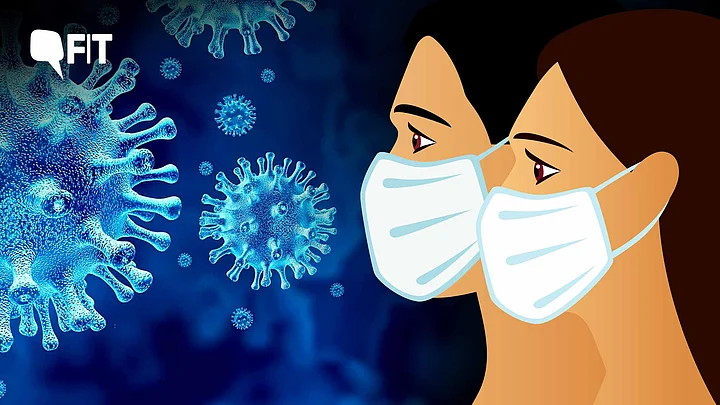"India had reached this status a year ago," Dr Chandrakant Lahariya, a public health and policy expert, told FIT, in response to World Health Organisation's (WHO) declaration that COVID-19 is no longer a global public health emergency.
“For more than a year, the pandemic has been on a downward trend with population immunity increasing from vaccination and infection, mortality decreasing, and the pressure on health systems easing,” WHO Director-General Tedros Adhanom Ghebreyesus had said, in a press conference on 5 May.
"Pandemic is a situation when multiple countries have an outbreak or epidemic going on. Till mid-2022, most countries were still facing country-level outbreaks. While hardly anything changes for India, there is a certain reporting requirement that countries must adhere to when there is a public health emergency; this may change now," Dr Lahariya told FIT.
There Will Be Sporadic Outbreaks
Just 20 days ago, on 16 April, India recorded 53,720 active cases of COVID in the country – the highest it's been this year. The current surge in cases has been attributed to the XBB.1.16 – Omicron sub-variant.
But experts have maintained that there is no reason to worry.
Speaking to FIT, during the spike, Dr K Srinath Reddy, Former President, Public Health Foundation of India, had stated, "Omicron has had a fairly long stay, and so far has not been displaced by a new virus form of SARS-CoV-2. Many of these viruses will surge in a cyclical manner."
"Since Omicron seems to cause milder illness, as long as we continue to see Omicron-derived variants, we should see milder forms of the disease. Does this mean we will no longer have a variant with a severe disease again? I don't think there are any guarantees to that. That speaks as to why it continues to be important to monitor both the clinical picture and the genome," Dr Gagandeep Kang, virologist, had told FIT.
It is because of a combination of several factors:
Weather and climatic changes
Changing levels of immunity in the host population
Change in behavioural patterns - people are less likely to take personal precautions
"So for a variety of reasons, I think we will get periodic spikes. This is going to be an ongoing phenomenon that we will continue to see from time to time," he had said.
Time to Shift Gear?
"If I were to have a game-plan for the future of India, it would be focused on testing respiratory infections for a range of pathogens in hospitals – not in the general community. Not your common cold, cough or fever," said Dr Gagandeep Kang had told FIT, in an interview in December 2022.
"But respiratory infections that make people sick enough to come to hospitals. It should not just be focused on SARS-COV-2. We should be looking at what else is causing respiratory diseases. We know that there is a lot of influenza out there; we know that there are other respiratory pathogens as well. So, we should be tracking everything and not just SARS-COV-2. If you call that endemic, then SARS-COV-2 is endemic."Dr Gagandeep Kang to FIT
"Any respiratory illness should be given focus, around 500 people die of it every day. This is very common in India. Tuberculosis kills 600 people every day. There should be a policy focused on this," Dr Lahariya added.
According to experts, India should decide:
What our priorities are?
What was neglected during the pandemic?
How to build stronger health systems?"
Will There Be Another COVID Pandemic?
"If we talk about pandemic in terms of a public health emergency of international concern, which is what we are really worried about, then it's unlikely to be so because we are seeing this particular variant, multiple countries," Dr Reddy said.
"As long as it's Omicron, and it's some variants that are dominating the scene and no further variant emerges with a higher level of virulence, and we do not see a surge in the number of cases requiring hospitalisation for serious illness," he had said.
(At The Quint, we question everything. Play an active role in shaping our journalism by becoming a member today.)
